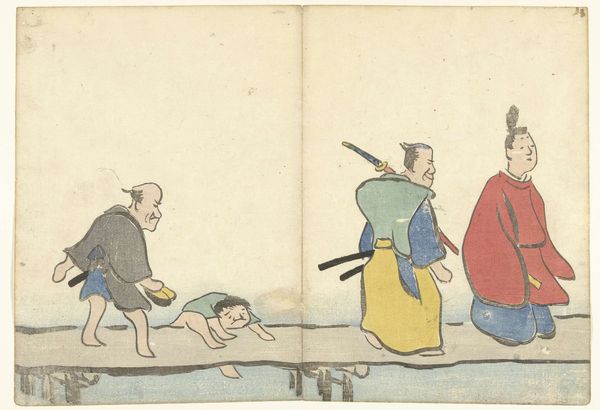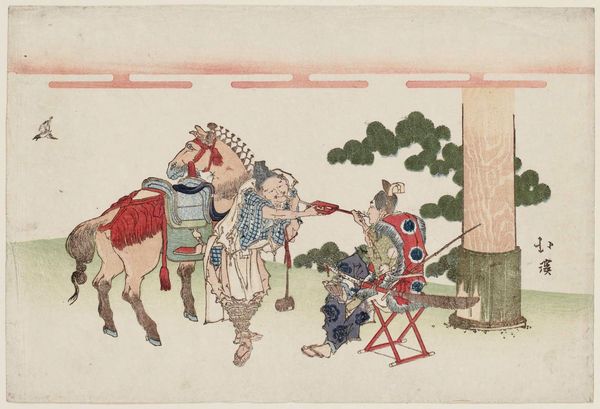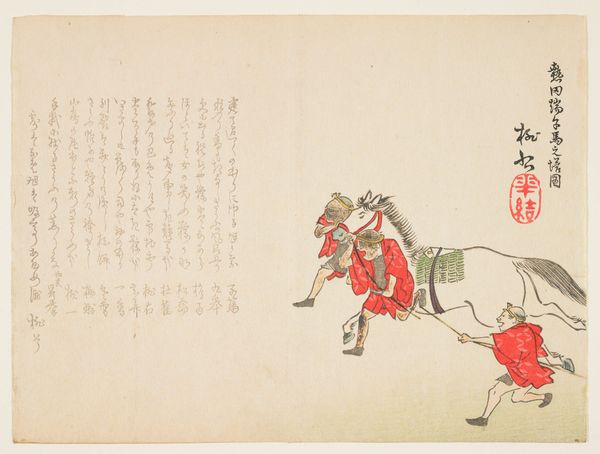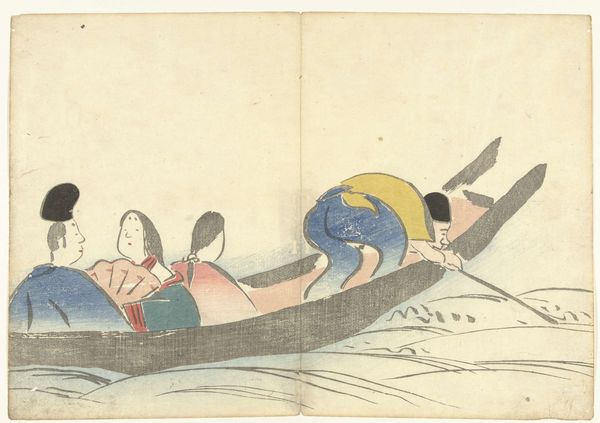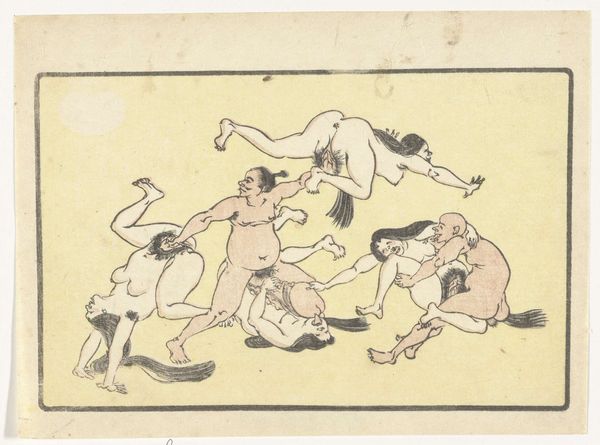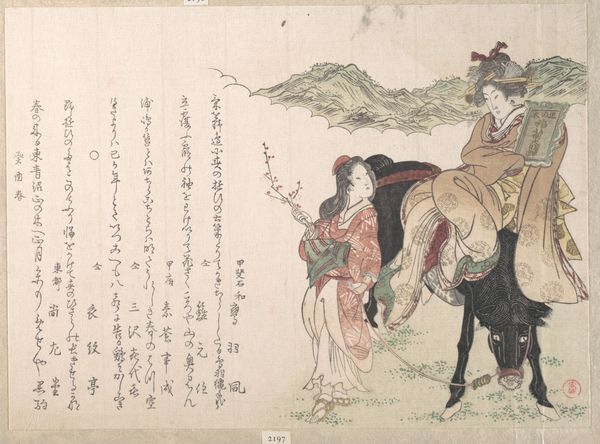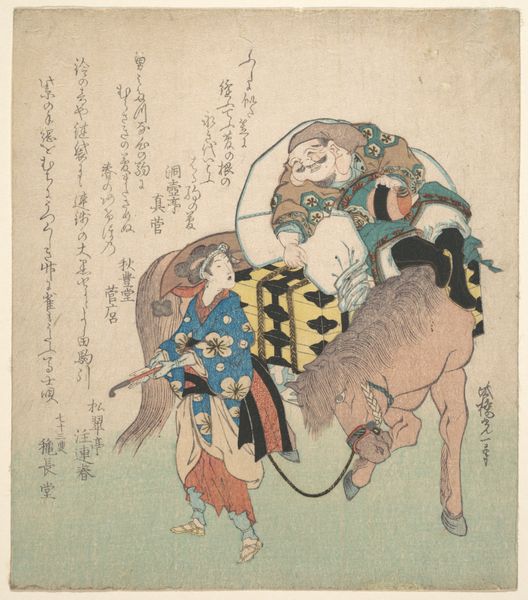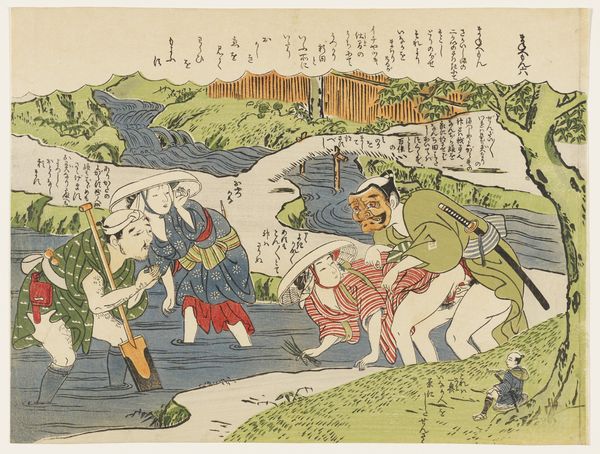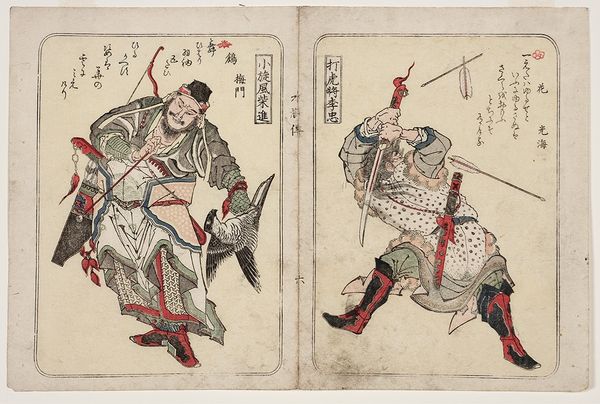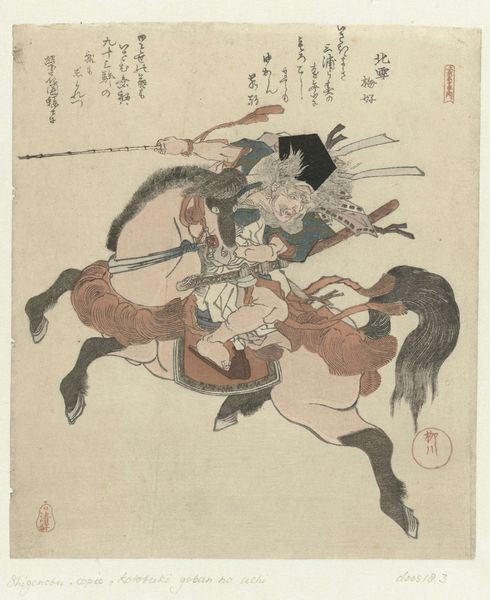
drawing, print, ink
#
drawing
#
blue ink drawing
#
narrative-art
# print
#
asian-art
#
ukiyo-e
#
ink
Dimensions: height 256 mm, width 368 mm
Copyright: Rijks Museum: Open Domain
Editor: This is *Vaandeldrager op paard*—Flag Bearer on Horse—an ink and print work by Nakamura Hōchū, from 1826. It strikes me as slightly humorous. The figures have almost comical proportions. What stands out to you about it? Curator: I am drawn to the image's blend of the mundane and the symbolic. Note the flag itself—a seemingly simple shape, yet it evokes notions of authority, allegiance, perhaps even aspiration. How does that flag, in its stark whiteness and sharp angles, communicate with the figure on foot, tethered to the horse? Editor: I see what you mean. The person on foot seems rather…subservient. Is the flag bearer perhaps a stand-in for the elite? Curator: Perhaps, but consider also the deeper symbolism within Ukiyo-e traditions, where societal critiques were often layered within seemingly simple depictions. The horse itself, a creature of power and grace, is led, controlled. Who truly holds the power here? And what stories do you think these characters convey? Editor: It is fascinating how a seemingly simple print can reveal complex ideas about societal structures and power dynamics. Are those ideas consistent across culture, I wonder? Curator: Absolutely. In understanding this visual language, it connects us across centuries. The way images are employed to encode deeper meanings resonates throughout art history and diverse cultures, continuing to echo within our current moment. Symbols remain powerful communicative devices. Editor: I appreciate how you tied in the universality of symbolism. Now I see the artwork as much more than a funny picture of someone leading a horse. Thanks!
Comments
No comments
Be the first to comment and join the conversation on the ultimate creative platform.

